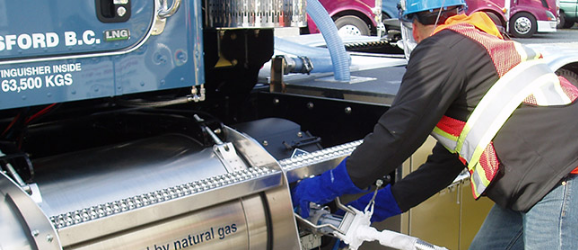To assist the government of Ontario in the design of a heavy-truck natural gas program, the Ontario Trucking Association (OTA) has issued a report entitled “Natural Gas as an Alternative Fuel for Canadian Truck Fleets: A Roadmap Toward Implementation.”
The report examines the two broad areas where investment dollars are required from fleets to make the transition to natural gas vehicles: (1) vehicle and station costs; and (2) ancillary costs.
Although vehicle and station costs are well understood, ancillary costs and challenges – such as management time for fleet transition evaluation; required facility upgrades; driver training; and other change management expenses – are less so.
“These ancillary expenses can make up to 10 percent of the overall cost of switching to natural gas vehicles. Without assistance and funding in these critical areas, fleets can easily become frustrated, making a successful conversion to natural gas vehicles less likely,” says OTA President Stephen Laskowski.
“Trucking companies are in the business of moving freight; we are not fuel transition experts,” he continues. “The more the government of Ontario’s program assists the industry in making a seamless transition to natural gas, the greater the likelihood the program will be successful.”
As reported, the OTA is already calling on the government program to fund up to $60,000 per natural gas vehicle in order to offset the cost differential of a diesel engine. Furthermore, the OTA says the government should provide carriers with access to the same incentives given to fuel suppliers to build fueling stations, as carriers may wish to install and operate private stations for their own fleets.
A recent study commissioned by the OTA and conducted by the Rustbelt Group estimated the vehicle and infrastructure cost for a 20-truck fleet would be $3.4 million, while the ancillary costs would come in at $325,000.







